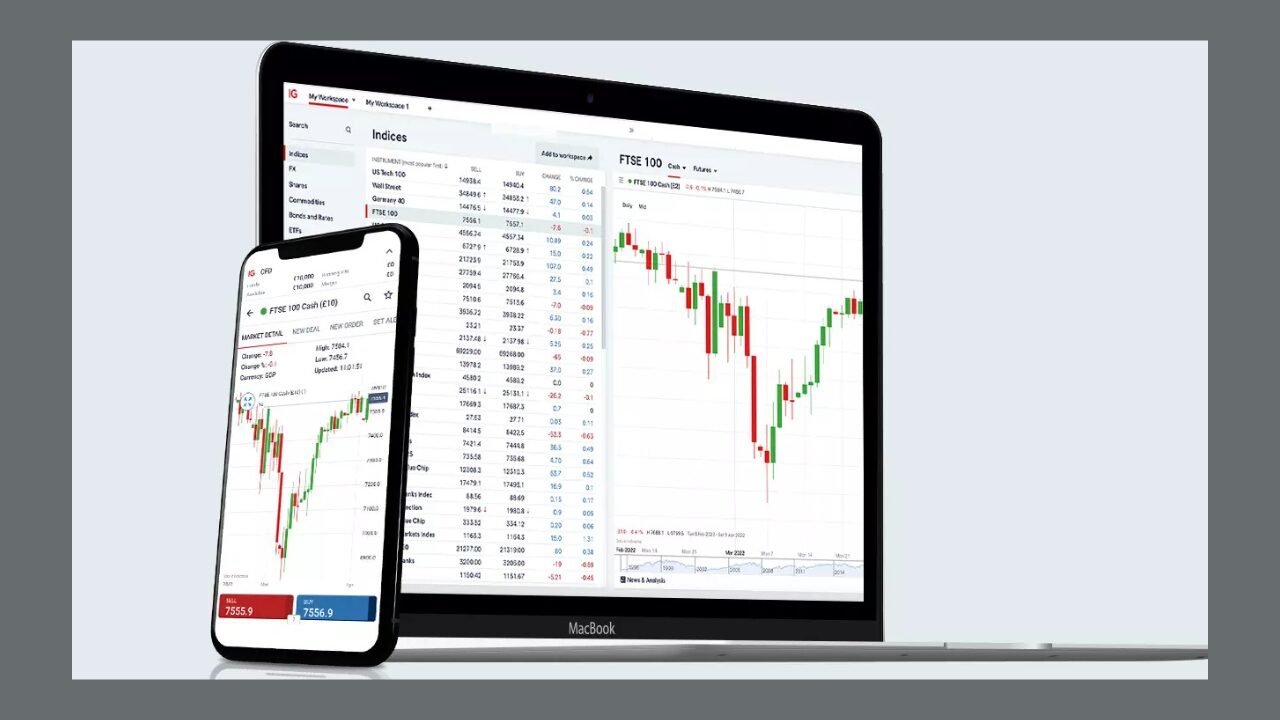UK Markets in Focus: A Beginner’s Guide to Trading in 2025

The UK is stepping back into the global financial spotlight.
After a period of post-Brexit uncertainty, Britain is once again attracting waves of foreign capital, reaffirming its status as a European financial powerhouse. But this isn’t just a symbolic comeback—real asset prices are moving, and so are investor expectations.
Financial firms listed on the London Stock Exchange are riding a wave of renewed optimism. Banking and fintech, once sluggish, are regaining strength as institutional money returns. For novice traders, this opens the door to speculate on recovery stories—whether through Contracts for Difference (CFDs) on individual equities, sector-tracking ETFs, or broader instruments like the FTSE 100. In markets, momentum matters. Understanding the narrative behind price movement—whether it’s optimism, fear, or recalibration—can be just as valuable as understanding the numbers.
Diplomacy Meets Markets: Why Geopolitics Matters More Than Ever
Beyond the charts, high-level diplomacy is quietly shaping the trading landscape. In early 2025, the UK’s renewed economic engagement with global powers—highlighted by meetings between Finance Minister Rachel Reeves and China’s Vice Premier He Lifeng—indicates a strategic shift toward revitalising trade.
These developments aren’t mere diplomatic formalities. A favourable investment deal or breakthrough in trade talks can boost export-focused British companies and strengthen the pound. Conversely, diplomatic tensions or stalled negotiations can drag on sentiment and valuations.
Trading for beginners: understanding macroeconomic news, policy announcements, and trade developments is essential. While long-term fundamentals, such as earnings and dividends, shape the broader outlook, short-term market movements are often driven by unfolding events. In these moments, instruments like CFDs and forex allow traders to react quickly to shifting sentiment, offering flexibility and speed without requiring ownership of the underlying asset. A Market in Transition: Fewer Listings, Bigger Questions
Despite the optimistic headlines, the UK financial market is undergoing a structural shift. Over the past year, more than 80 companies have removed themselves from the London Stock Exchange. To some, it’s a red flag for declining liquidity and investor engagement. To others, it’s a natural consolidation—a healthy trimming of excess.
Yet, traders should also keep an eye on the political conversation. Reform UK has presented a bold proposal to discontinue interest payments on Bank of England reserves. Though far from the law, the very discussion of such policies can alter expectations about inflation, monetary tools, and banking profits.
For new traders, the lesson is clear: markets don’t just react to numbers—they respond to expectations. Staying attuned to party platforms, central bank commentary, and fiscal policy announcements is essential, even before these ideas translate into law.
Sector Snapshots: Where Opportunity Is Taking Shape
Zooming in, specific sectors are flashing signals of growth. Tata Steel’s commitment to a new electric-arc furnace at Port Talbot is more than an industrial upgrade—it’s part of a broader transition toward low-emission infrastructure.
Meanwhile, upcoming public spending reviews suggest increased investment in healthcare, defence, and transportation. This could translate into tailwinds for construction firms, industrial suppliers, and government contractors.
For newcomers, exposure to these themes doesn’t require stock picking. Sector ETFs or baskets of related stocks, traded via CFDs, allow for diversified access, mitigating the risk that a single underperformer drags down your strategy. Entry points should be guided by technical analysis or aligned with fundamental momentum, not just headlines.
READ MORE
Starting Smart: A 2025 Roadmap for New Traders
There has never been a better time to learn about the markets. A confluence of global diplomacy, local policy shifts, and evolving investor sentiment shapes the UK trading environment in 2025. For beginners, this is an ideal training ground—but only if approached with discipline and dedication.
Start with liquid and familiar assets: blue-chip stocks, major currency pairs like GBP/USD, or the FTSE 100 index. Use CFDs cautiously—they offer leverage and flexibility, but risks scale up quickly. Every trade should be built around a plan, protected by stop-losses, and backed by clear reasoning.
More than anything, focus on the story behind the price. Why is an asset rising? What expectations are being priced in? Where might sentiment turn next? Markets are not just about numbers—they’re about interpretation, psychology, and timing.
In the UK’s 2025 market landscape, information isn’t just data—it’s direction. And for the beginner, that makes every news headline a potential signal.w
